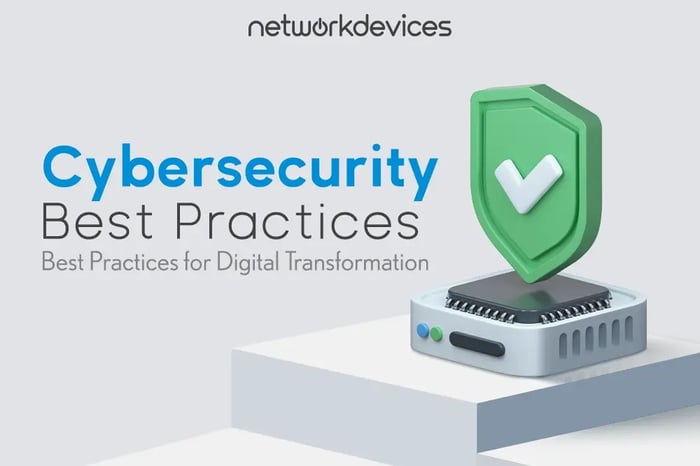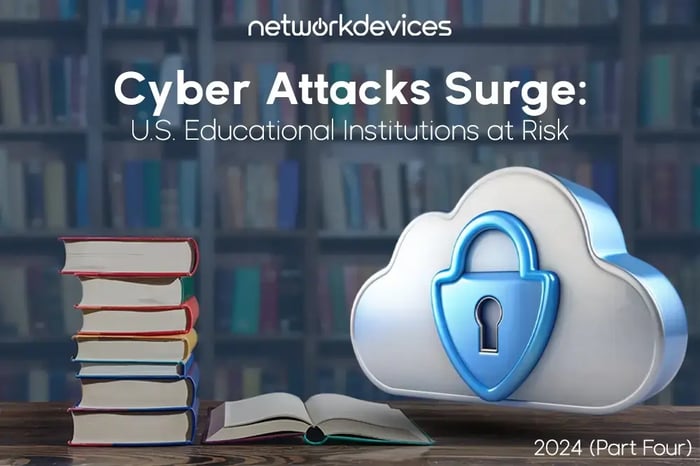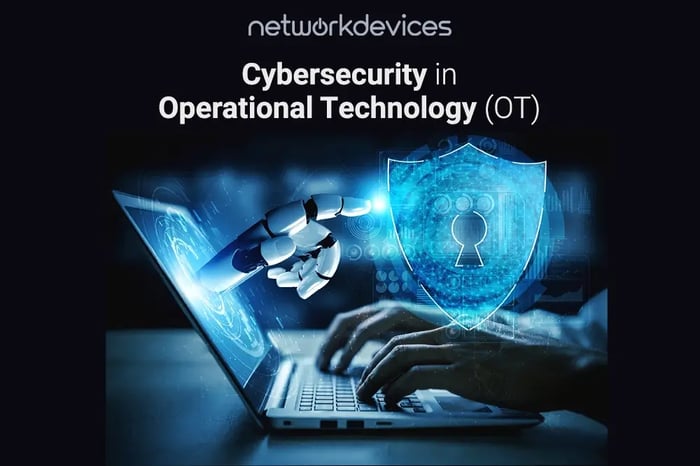You have no items in your shopping cart.

Cybersecurity Best Practices for Digital Transformation
Organizations embracing digital transformation aim to reduce operational expenses (OPEX), increase efficiency, and gain a competitive edge. However, rapid innovation expands the threat landscape, increasing cybersecurity risks. Effective cybersecurity governance is critical to balancing innovation with robust security.
This article explores how to successfully integrate cybersecurity into your digital transformation strategy, ensuring data protection, compliance, and continuous growth.
Why Cybersecurity Is Essential in Digital Transformation
Digital transformation offers operational advantages through cloud migration, IoT implementation, and artificial intelligence. Yet, each new connected technology broadens an organization's vulnerability, increasing susceptibility to cyber threats.
Organizations must proactively embed cybersecurity into their digital transformation strategies. Ignoring these risks can result in costly data breaches, loss of customer trust, and regulatory penalties.
"In advising companies undergoing digital transformation, I've observed that proactively embedding cybersecurity from the outset dramatically reduces the risk of costly breaches."
Common Cybersecurity Challenges During Digital Transformation
Organizations face specific cybersecurity challenges when digitizing their business processes:
Expanded Attack Surface
As businesses embrace cloud computing, IoT devices, and mobile solutions, they inadvertently expand their attack surface. Each new connected device or platform creates potential entry points for cybercriminals.
Data Privacy and Compliance
Storing sensitive data across multiple platforms heightens the risk of breaches, making compliance with regulations such as GDPR, HIPAA, and CCPA increasingly complex.
Addressing Legacy System Vulnerabilities
Numerous organizations depend on legacy systems that lack resilience against contemporary cyber threats. Integrating these outdated systems with modern digital tools can introduce vulnerabilities that hackers might exploit; for instance, factories often utilize obsolete OT devices.
Cybersecurity Skills Gap
The demand for skilled cybersecurity professionals exceeds supply, leaving organizations vulnerable to emerging threats, including phishing, malware, and ransomware attacks.
Third-Party Security Risks
The growing use of third-party vendors, cloud service providers, and external contractors can introduce additional vulnerabilities. A single weak link in the supply chain can jeopardize an organization’s security posture.
Best Practices to Secure Digital Transformation
Effectively addressing cybersecurity risks requires organizations to embed security into every digital initiative.
1. Develop a Comprehensive Cybersecurity Strategy
A robust digital transformation cybersecurity strategy includes the following:
- Conducting thorough risk assessments to identify potential security threats before adopting new technologies.
- Developing comprehensive incident response plans to quickly manage and recover from cybersecurity incidents.
- Performing regular security audits and vulnerability assessments to maintain strong defenses.
2. Invest in Continuous Cybersecurity Awareness & Training
Employee mistakes represent a significant cybersecurity risk:
- Regularly train employees to recognize and respond to phishing, malware, and ransomware attacks.
- Enforce strong password policies and encourage multi-factor authentication (MFA).
- Promote a culture of security awareness, emphasizing the importance of data privacy and secure communication.
3. Implement Zero-Trust Security
With remote work, cloud computing, and mobile devices, traditional security perimeters are obsolete. Adopting zero-trust architecture involves:
- Authenticating and authorizing all access requests—trusting no user or device by default.
- Enforcing strict access controls and authentication mechanisms to limit potential breach impacts.
4. Secure Cloud Environments and Third-Party Integrations
Cloud migration is pivotal to digital transformation but presents unique security considerations:
- Utilize robust encryption protocols for sensitive data at rest and in transit.
- Select reputable cloud providers adhering to industry security standards such as ISO 27001.
- Conduct comprehensive risk assessments of third-party vendors, ensuring they comply with rigorous security standards.
5. Leverage AI and Automation for Cybersecurity
To combat increasing cybersecurity complexity, organizations should:
- Deploy AI-powered cybersecurity solutions for real-time threat detection and anomaly recognition.
- Automate routine security tasks like patch management and vulnerability scanning to minimize the potential attack window.
- Utilize machine learning for proactive threat identification, significantly enhancing defense capabilities.
6. Ensure Regulatory Compliance
Compliance with cybersecurity and data privacy regulations is non-negotiable during digital transformation:
- Align all digital initiatives with compliance frameworks such as GDPR, CCPA, HIPAA, and industry-specific regulations.
- Regularly audit your cybersecurity posture against current compliance requirements.
- Adopt “privacy by design” principles to incorporate data governance and compliance from the outset.
7. Utilize Recognized Security Frameworks (NIST & ISO 27001)
Using structured frameworks helps standardize cybersecurity approaches during transformation:
a. NIST Cybersecurity Framework (CSF)
This framework, developed by the U.S. National Institute of Standards and Technology (NIST), provides guidelines for managing cybersecurity risks.
How NIST Helps Digital Transformation: It provides a flexible security model that aligns with new technologies. It helps organizations prioritize security investments based on risk and supports compliance with regulations like GDPR and CCPA.
b. ISO/IEC 27001 (ISO27K)
ISO/IEC 27001 is an internationally recognized Information Security Management Systems (ISMS) standard.
How ISO27K Helps Digital Transformation: It ensures a standardized approach to security across global operations and reduces compliance risks by meeting industry security requirements.
Case Studies: Cybersecurity and Digital Transformation Success
Microsoft’s Cloud Security Approach
Microsoft exemplifies embedding cybersecurity within digital innovation by:
- Implementing robust built-in security across its Azure cloud services.
- Leveraging AI in cybersecurity and automation for rapid threat response.
- Adopting a comprehensive zero-trust model, protecting cloud infrastructure, and maintaining customer trust.
Capital One's Secure Cloud Migration
Capital One successfully navigated cloud security by:
- Working closely with cloud vendors to ensure robust data security through stringent encryption.
- Implementing strict access control measures, including MFA.
- Conducting regular security audits and risk assessments, ensuring resilience against threats throughout the cloud migration.
How to Balance Innovation and Cybersecurity
Digital transformation presents both significant opportunities and heightened risks:
- Increased connectivity enhances efficiency but expands potential vulnerabilities.
- Organizations must proactively manage risks through strategic cybersecurity integration, maintaining continuous vigilance throughout transformation.
Resisting digital transformation risks falling behind competitors who embrace innovation. Avoiding it leads to missed opportunities in automation, scalability, and data-driven insights, which are, which are essential for growth.
Neglecting cybersecurity can severely damage customer trust, regulatory standing, and overall business success.
Conclusion
Integrating cybersecurity throughout your digital transformation process is vital. Security shouldn't be an afterthought but a foundational pillar of your innovation strategy.
Organizations can innovate securely and confidently in an increasingly connected digital world by proactively investing in cybersecurity strategies, employee training, regulatory compliance, and advanced technologies like AI and automation.
About the Author
This article was authored by a cybersecurity professional with extensive experience in guiding organizations across various industries through secure and compliant digital transformation journeys.






